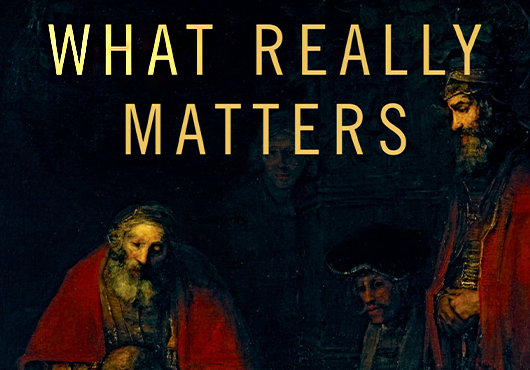
For the first time, many physicians, regardless of specialty, are being forced to consider what the standard of care will be for informing patients about “assisted suicide” or "physician aid-in-dying ” (PAD). The American Medical Association (AMA) Code of Medical Ethics does not condone physician participation, calling the practice “fundamentally incompatible with the physician’s role as healer.” [1] As an alternative to PAD, the AMA advocates aggressive multidisciplinary interventions including emotional support and adequate pain control. [2]
Although the AMA is opposed to the practice of PAD, a 2010 survey of more than 21,000 medical professionals found that the majority of the doctors surveyed (54 percent) favored a patient’s right to physician aid-in-dying. [3] As of this writing, PAD has been legalized or available through court ruling in seven states (California, Colorado, Hawaii, Oregon, Montana, Vermont, Washington) and the District of Columbia; New Jersey is passing legislation following suit in August, followed by Maine in September. As more states legalize PAD and the AMA continues to affirm it to be unethical, many physicians will have to decide whether to follow the ethical cannon of their profession or allow patients to exercise their rights under the law. In light of the rapid expansion of PAD as an end-of-life option, the medical community needs to determine an ethical standard for informing patients about the choices available to them.
Diagnosed with amyotrophic lateral sclerosis (ALS), Craig Ewert made the decision to choose how he would spend his final days, and ultimately end his life. Mr. Ewert and his wife traveled to Switzerland where, with the legal assistance of a physician, he died at age fifty-nine by consuming a lethal dose of pentobarbital. Prior to his death, Mr. Ewert stated, “At this point, I’ve got two choices . . . if I go through with it, I die, as I must at some point. If I do not go through with it, my choice is essentially to suffer and to inflict suffering on my family and then die—possibly in a way that is considerably more stressful and painful than this way (physician aid-in dying). So, I’ve got death, and I’ve got suffering and death. You know, this makes a whole lot of sense to me.” [4]
Mr. Ewert’s story is not unique. Since 1997, over 2,000 Americans have made the decision to end their lives with the help of a physician, rather than to suffer during the end stages of terminal illnesses. [5] Twenty years ago, PAD was illegal in all fifty states. In 1997, Oregon became the first state to legally allow terminally ill patients the option to hasten death by taking a prescription medication. [6] Many more states have attempted to pass legislation legalizing PAD, including a Ballot initiative in Massachusetts. [6] However, no standard of care yet exists to guide physicians and patients during the medical decision-making process about the option of physician aid in dying at the end of life. This poses an ethical quandary for providers.
Enshrined in the principle of informed consent are two ideas. First is the patient’s legal right to make the decisions that affect his or her medical care. [6], [7], [8] Second, the patient has a right to know about the options available from which to choose. Because most patients are not experts in medical matters, the physician is obligated to disclose relevant information so the patient can make an “informed” decision about his or her treatment. [6], [7], [8] Traditionally, the information that a physician has a duty to disclose has been based on the customs and traditions of the community. [6], [7], [8] Essentially, physicians are responsible to disclose only information about care and treatment options that are customarily disclosed within the physicians’ and patients’ community. In the case of PAD, in places where it is not legal, physicians have not customarily informed patients of this option. As more states legalize PAD and the practice becomes more ethically accepted, it is important to determine a standard of care to guide physicians.
When determining an ethical standard of discussing physician aid in dying during medical decision-making, it is important to begin with the caveat that physicians are not ethically obligated to assist a patient in ending his or her life, even if the physician informs the patient of the right to do so. Physicians have the right to conscientious objection, that is, the right to recuse him or herself from treating a patient when he or she religiously or ethically opposes the treatment option, and when the physician’s recusal will not compromise the quality, efficiency, or equitable delivery of the patient’s care. [9] Thus, the question of whether a physician ought to inform a patient about the possibility of PAD is separate from whether the physician is obligated to help assist a patient who wants to exercise this medical decision.
Since the AMA does not condone PAD, but more than half of physicians surveyed support this option, a disconnect exists between the ethical values put forth in the AMA Code of Medical Ethics and the values of practicing physicians. While physicians are not legally or ethically bound to provide PAD, in places where the practice is legal, the AMA’s position against this practice presents physicians with the dilemma of choosing between the doctrine of informed consent what is ethical and what is legal when advising patients on end-of-life medical options. Although PAD may be a legally accepted option in many states, it is not universally condoned as an ethical practice within the medical profession. The question of whether physicians ought to inform patients of a controversial medical intervention is not new. Several years ago, when Plan B, an emergency contraceptive pill, was released as a secondary form of birth control, pharmacists and physicians around the country were forced to determine whether they would provide Plan B to their patients. [9] Although it was uniformly legal to provide Plan B, the medical community determined that physicians could decline to prescribe it and pharmacists could decline to provide it to patients. However, providers who refused were ethically required to direct patients to a provider who would provide Plan B. [9]
In the case of PAD, if the patient approaches their doctor about this option, physicians who contentiously object to providing it should direct patients to providers who are willing to discuss this option. The question of whether physicians are ethically obligated to bring this option to the patient’s attention in the first place as part of the informed consent process during medical decision-making is more complex. The AMA has issued an official opinion that "[p]atients have the right to receive information and ask questions about well-considered decisions about care.” [10] Thus, a physician’s right to conscientious objection does not trump the patient’s right to informed consent in medical decision-making.
In order to support physicians in these difficult end-of-life decisions, one approach may be to have palliative care physicians discuss this option with patients. Palliative care providers have special training in how to talk about the dying process and may be the best physician to have this discussion with dying patients. Although, asking palliative care physicians—given their specialized training and ability to handle dying patients—to have these difficult conversations may be the best practical idea, this approach as a matter of policy has the potential to create a stigma about palliative care and the role these physicians play in the death and dying process. Palliative care physicians work to help improve quality of life and alleviate suffering during the end of life without intentionally hastening death. [10] Aiding patients in dying is in direct contention with the goals of palliative care as aid in dying intrinsically hastens death. If palliative care becomes associated with the act of hastening death, the specialty may face the unintended consequence of patients fearing palliative care.
Another option for ensuring patients are appropriately informed of their end-of-life options is to have a non-physician approach patients, similar to the role the Organ Procurement and Transplantation Network plays during organ procurement. Yet another would be to create a national registry of physicians willing and able to assist patients who indicate an interest in learning more about assisted death options. This could be accomplished by creating a centralized mechanism for patients to inquire about PAD, as suggested by Prokopetz and Lehmann. [11]
Establishing a standard of care for the informed consent process is important in ensuring that all patients are informed about available, appropriate, and ethical end-of-life care options. Although the AMA denounces aid in dying as an unethical practice, physicians may argue that if PAD is legal in their state of practice and presenting end-of-life care is appropriate for the patient, then physicians should be allowed to present this choice without condemnation from his or her accrediting body. Allowing each physician to individually determine whether he or she is comfortable having the conversation about PAD options may be seen as protecting physician’s individual conscience. However, such a policy may result in an unjust provision of care in that all patients will not be uniformly informed about the end-of-life care possibilities. And although providing information about PAD may make some physicians uncomfortable, this standard does not deviate from established ethical norms of informed consent, such as the responsibility of physicians to inform patients that abortion is an option (even if the physician contentiously objects to performing abortions).
Providing patients with all end-of-life care options, including PAD as a routine part of the informed consent process will allow the greatest number of patients to consider this option. In states where PAD is legal, standing informed consent doctrines justify requiring physicians to give patients this information as part of the informed consent process; it is harder to justify this practice in states where PAD is not legal. In states where PAD is not legal, physicians should at least have the discretion to inform patients who would benefit from this information about options in states where PAD is legally available. In allowing physicians the option to discuss physician aid in dying, more patients will have the ability to consider this option when making end-of-life decisions.
Amber R. Comer, PhD, JD, can be reached at comer(at)iu.edu.
[1] American Medical Association. Principles of Medical Ethics. Physician-Assisted Suicide, Code of Medical Ethics Opinion 5.7. American Medical Association (Chicago, IL: 2017)
https://www.ama-assn.org/delivering-care/ethics/physician-assisted-suicide.
[2] American Medical Association. Principles of Medical Ethics. Code of Medical Ethics: Caring for Patients at the End of Life, Chapter 5. American Medical Association (Chicago, IL: 2017)https://www.ama-assn.org/delivering-care/ethics/code-medical-ethics-caring-patients-end-life.
[3] Span, Paula. "Physician Aid in Dying Gains Acceptance in the U.S." New York Times. (New York City, NY) Jan. 16, 2017.
[4] Zaritsky, John, dir. The Suicide Tourist 2010, 11 "The Suicide Tourist." Aired on March 2, 2010 on Frontline PBS. https://www.pbs.org/wgbh/pages/frontline/suicidetourist/.
[5] Oregon Health Authority. Oregon Death with Dignity Act: 2015 Data Summary. Oregon Health Authority (OR: 2016) https://www.oregon.gov/oha/ph/ProviderPartnerResources/EvaluationResearch/DeathwithDignityAct/Documents/year18.pdf.
[6] Beauchamp, Tom L., James F. Childress. Principles of Biomedical Ethics (New York: Oxford University Press, 1979) 56-96.
[7] Faden, Ruth and Tom L. Beauchamp. A History and Theory of Informed Consent (New York: Oxford University Press, 1986)
[8] Lidz, Charles W., Paul S. Appelbaum, and Alan Meisel. "Two Models of Implementing Informed Consent." JAMA Internal Medicine 148, no. 6 (1988): 1385-1389. https://doi.org/10.1001/archinte.1988.00380060149027.
[9] Wicclaid, Mark R.. Conscientious Objection in Health Care: An Ethical Analysis (New York: Cambridge University Press, 2011).
[10] American Academy of Hospice and Palliative Medicine. Statement on Physician-Assisted Dying. American Academy of Hospice and Palliative Medicine (Chicago, IL: 2016) http://aahpm.org/positions/pad.
[11] Prokopetz, Julian and Lisa Soleymani Lehmann. "Redefining Physicians’ Role in Assisted Dying." New England Journal of Medicine 367, no. 5 (2012): 97-99. https://doi.org/10.1056/NEJMp1205283.


